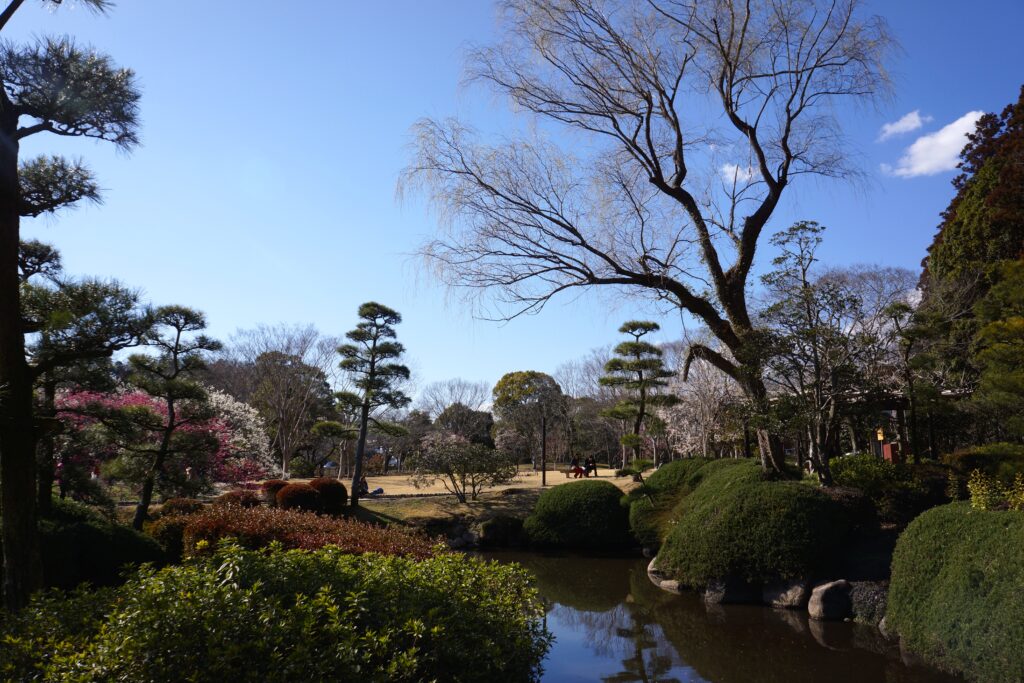
Our Ibaraki Prefecture Tour of Japan brings you to one of Japan’s major agricultural centers, specifically the home of nattō, or fermented soybeans, and the (famous? infamous?) nattō-themed masot of the prefectural capital, Mito: Nebaaru-kun. Ibaraki-ken (kanji: 茨城県 (いばらきけん)) is located on the largest island, Honshū, northeast of Tōkyō along the coast.

Ibaraki Prefecture is notable for its flat lands, a major distinction in a country that is roughly 75% mountainous. Water is abundant and the climate is well-suited to growing everything from melons, pears, peppers, cabbage, rice, sugar cane, and–of course–soybeans. Summers are short and hot, while winters are very cold and clear.





The capital of Ibaraki Prefecture is Mito, which also happens to be the home of one of the Three Great Gardens of Japan (kanji: 日本三名園 (にほんさんめいえん)). Of course, Japan is home to many great and justifiably famous gardens, but Kairaku-en (kanji: 偕楽園) is one of the most breathtaking. While the plum blossoms (over 3,000 trees of over 100 varieties) are considered the most popular attraction, the gardens also have bamboo and cedar groves as well. Plum blossoms tend to bloom in late winter/early spring, so this is a good time to visit Mito.










Remember the difference between a plum blossom, a cherry blossom, and a peach blossom is that plum flowers are entirely rounded, peach are pointy at the tip of the petals, and cherry blossom has a divot at the tip of each petal.





But back to nattō, breakfast of champions in Ibaraki Prefecture–and indeed, throughout much of Eastern Japan.

Nattō is basically fermented soybeans. The area of Ibaraki Prefecture around Mito City produce an abundance of smaller-sized soybeans, which are perfect for this food. Although there are numerous theories about the origins of nattō, Mito is said to be the origin because of Minamoto no Yoshiie, a samurai who was staying at a residence in the town of Watari in Mito on his way to Oshu during the Gosannen War in 1083. His men boiled soybeans and placed them in straw bags. Rice straw bacteria adhered to the boiled soybeans, fermenting the soybeans. He and his troops ate them and liked the taste.
Nattō has a pungent smell, strong flavor and sticky, slimy texture. It is most popular in the eastern regions of Japan. A 2009 survey found the 70% of the Japanese people liked the taste of nattō. It is often served as a breakfast food. There are many ways to serve nattō, pairing it with everything from eggs to daikon radish to mochi. You can even dry nattō, preserving the flavor without the typical texture.

The Tour of Japan: Ibaraki Prefecture box offered by Tangerine Mountain features Nebaaru-kun (ねば~る君 ), the official mascot of Ibaraki Prefecture. This lovable bean was introduced a few years ago to represent natto in the minds of everyone who lives in or visits Japan. You can see Nebaaru-kun in action on Youtube, regrettably without much in the way of translation, but you will get the idea. Here’s a few clips for your viewing pleasure: Nebaaru-kun Introduction Event; more Nebaaru-kun on stage (watch this one to the end to see him get really tall!); a Nebaaru-kun ASMR video; Nebaaru-kun teaching you to write the kana あ; and even an entire channel devoted to the lovable natto mascot!
The Tour of Japan: Ibaraki Prefecture box also features other fantastic items that help you celebrate this oceanside prefecture. Plum blossom chopsticks will help you remember the plum blossoms of Kairaku-en (kanji: 偕楽園). And of course, we couldn’t forget to pay tribute to “Kashima octopus,” which is an extremely popular New Year’s food for the locals.
We hope you enjoy your Tour of Japan to Ibaraki Prefecture! Please visit other prefectures and regions of Japan to learn more about the amazing culture and history of Japan!
Sources:
Images:
https://www.flickr.com/photos/tanaka_juuyoh/
https://www.flickr.com/photos/iizukanao/
https://www.flickr.com/photos/inucara/
https://www.flickr.com/photos/haru__q/
https://www.flickr.com/photos/ikoma/
https://www.flickr.com/photos/o_0/
https://www.flickr.com/photos/asagayakei/
https://www.flickr.com/photos/raita/
https://www.flickr.com/photos/sodaigomi/
https://www.flickr.com/photos/65255883@N04/
Information:
https://www.japan.travel/en/destinations/kanto/ibaraki/
https://en.japantravel.com/ibaraki
https://www.pref.ibaraki.jp/
https://www.ibarakiguide.jp/
https://www.tripadvisor.jp/Attractions-g298165-Activities-Ibaraki_Prefecture_Kanto.html
https://travel.rakuten.co.jp/mytrip/ranking/spot-ibaraki
https://mondomascots.com/index.php/2017/06/26/official-vs-unofficial-mascots-of-japan/
https://www.maff.go.jp/e/policies/market/k_ryouri/area_stories/ibaraki.html
https://foodinjapan.org/kanto/ibaraki/natto/





